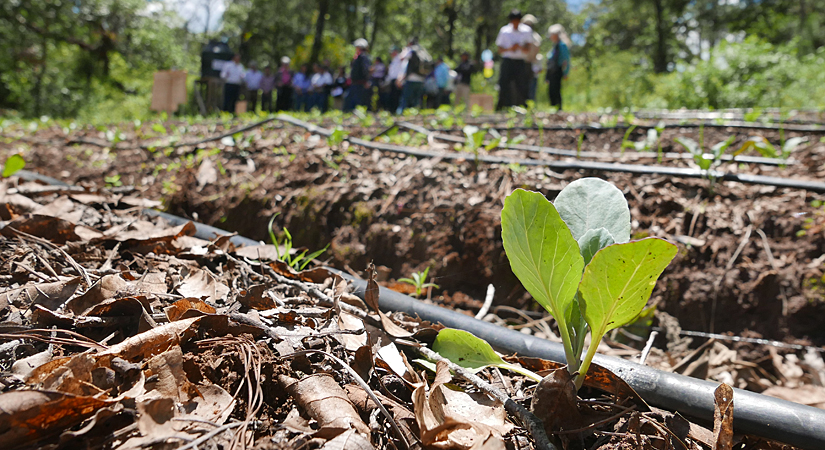
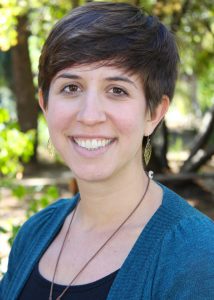
Editor’s note: Meagan Terry, UC Davis junior specialist and project manager for MásRiego, reports from Guatemala on the opening events for the Horticulture Innovation Lab’s new project there, which promotes drip irrigation and conservation agriculture.
After months of planning and a week of events, our new MásRiego project now has a team ready to work, and together we have officially launched the project. Here are some details about our recent training and launch event.
For three days in late August, Kansas State University researchers — Manuel Reyes and Ruth McDaniel — trained six agricultural technicians and eight youth promoters that will make up part of the team of MásRiego staff located in Santa Cruz de Quiche, a municipality in the Western Highlands of Guatemala.
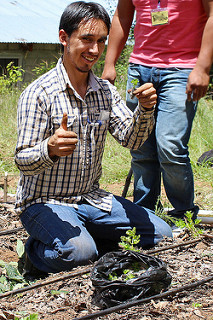
The training focused on conservation agriculture and its major themes: mulch and soil cover, preservation of natural resources, no-tillage, and biodiversity. Participants learned the importance of organic mulch in suppressing weed growth, preventing soil compaction, and decreasing evapo-transpiration from the soil. They put their knowledge into practice outside in the demonstration garden at the Centro de Paz Bárbara Ford (CPBF) by applying mulch layers, planting seedlings with minimal soil disturbance, and using drip irrigation to get water to plant root zones. Their work establishing the demonstration garden at CPBF will be useful for future trainings and for technicians to fine-tune their skills before working directly with farmers.
Youth from 12 distinct municipalities in the departments of Quiche, Quetzaltenango, and Totonicapan will serve as local facilitators or promoters, allowing for entry points into communities and helping ensure the sustainability of the project work — when the MásRiego project ends three years from now.
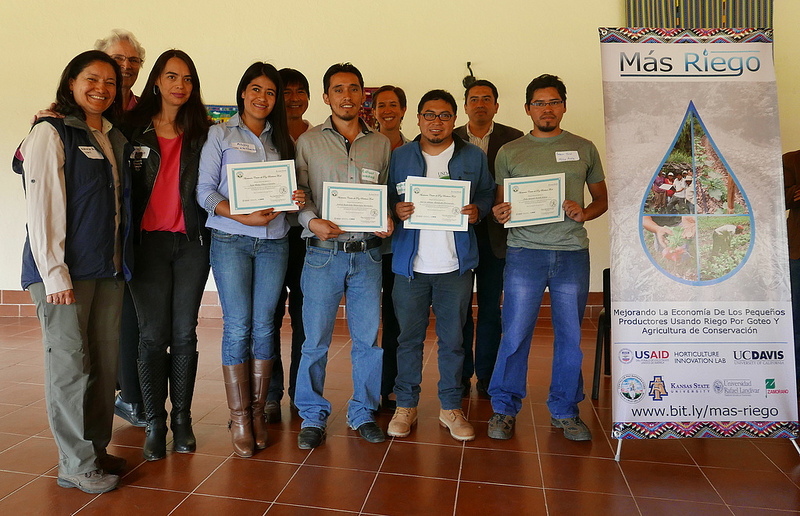
Technicians from all three regions will be the direct implementers of the project we’ve been planning — leading farmer trainings, assisting with installing drip irrigation equipment, and working tirelessly to ensure that farmers are able to access credit that allow them to purchase drip irrigation kits for their small plots (200-400 square meters) for commercial vegetable cultivation.
The technicians will use various techniques to ensure that the project takes into account the myriad differences between communities, municipalities and departments. The team’s goal is that needs of communities will be put foremost, so that farmers adopting drip and conservation agriculture practices have continued technical support from MásRiego project staff.
The training happened just days before the official inauguration event for the MásRiego project, bringing together international partners and other organizations that are part of the Western Highlands Integrated Programs (WHIP) of USAID/Guatemala.
Cutting the ribbon for the demonstration garden at CPBF is the MásRiego team, from left: Sister Virginia Searing, Glenda Paiz of USAID, Luciano Llaynez of CPBF, Meagan Terry of Horticulture Innovation Lab, Felix Archila of CPBF, Jose Leonardo Garcia of CPBF, Alexander Jocol of CPBF, and Edilsar Mazariegos of CPBF. (Photo by Hunter Ryan)
At the launch event, Sister Virginia Searing, Director of the CPBF, shared her enthusiasm for creating a more holistic approach in agriculture that engages youth and connects them to business opportunities in their communities. Glenda Paiz, from the office of Economic Growth Office for USAID/Guatemala, commented on the continuing efforts to reduce poverty and malnutrition in the western highlands. Manuel Reyes of Kansas State University shared his passion for the FAO’s “Save and Grow” guides, which promote conservation agriculture for small-scale farmers to reduce negative environmental impacts and increase their yields. Finally, Jose Leonardo Garcia, the new coordinator of MásRiego for CPBF relayed some of the important goals of the project and introduced some of his team as they received certificates for completing the conservation agriculture training.
After the conservation agriculture training with Manny Reyes (in orange), the team is ready to get to work. (Photo by Britta Hansen)
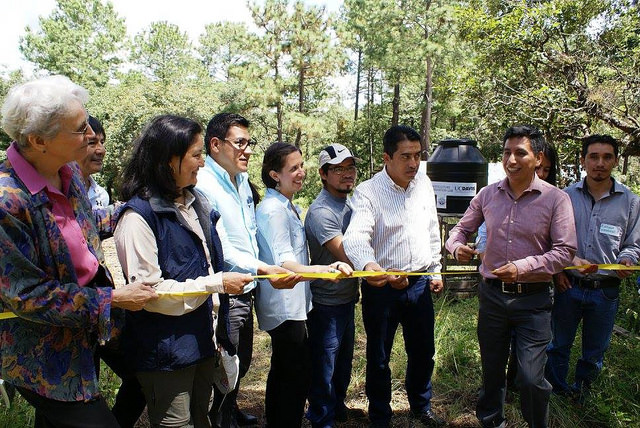
Last week, the staff of CPBF, including the MásRiego team and the institution as a whole, received training from the Quetzaltenango-based organization IDEI in human rights topics. This training specifically addressed the LGBT community, and started a conversation that is delicate and typically taboo in indigenous communities throughout Guatemala. Participants discussed creating spaces for inclusion for all people in their community, no matter gender or sexual orientation, so that the new project will be welcoming to marginalized groups and as inclusive as possible.
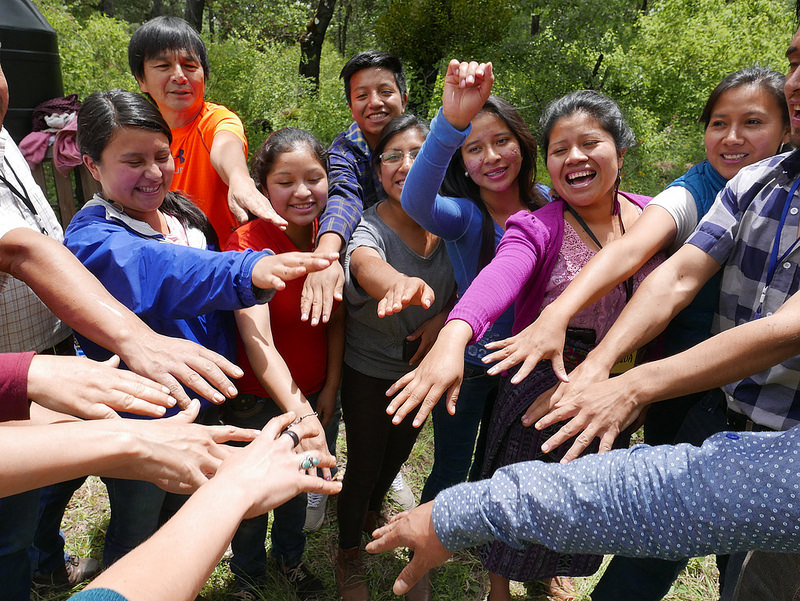
As the program begins, the new team will be identifying communities where they will work, train, and increase the utilization of drip irrigation for commercial vegetable production. We are excited to begin this dynamic and important work!
More information:
- Flickr: More photos from the MásRiego project
- Project announcement: Bringing More Irrigation and Climate-Smart Farming to Guatemala
- Project information: Promoting drip irrigation and climate resilience
